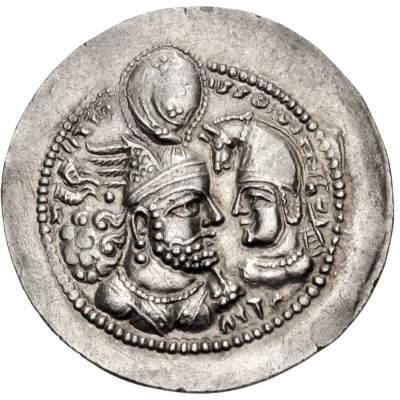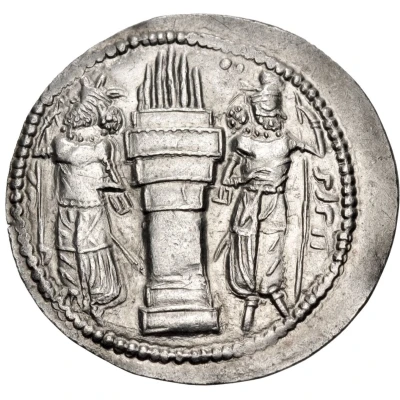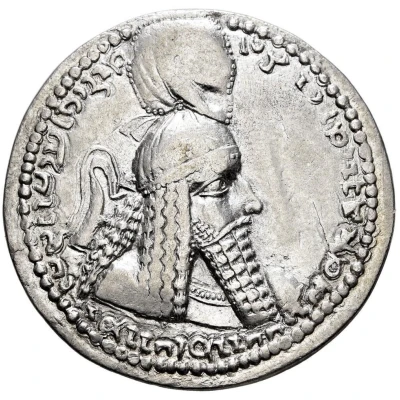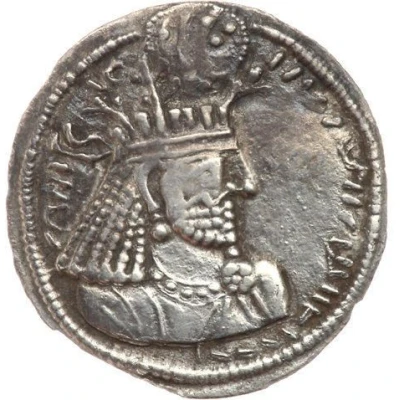
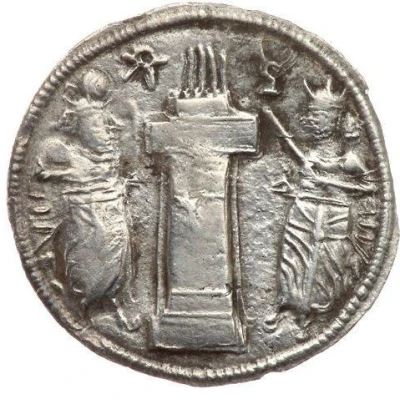

© The New York Sale
Hemidrachm - Narseh
| Silver | 1.90 g | - |
| Issuer | Sasanian Empire (Sasanian Empire (224-651)) |
|---|---|
| Emperor | Narseh (293-302) |
| Type | Standard circulation coin |
| Years | 293-303 |
| Value | Hemidrachm (1⁄24) |
| Currency | Dinar (224 AD-651 AD) |
| Composition | Silver |
| Weight | 1.90 g |
| Shape | Round (irregular) |
| Technique | Hammered |
| Demonetized | Yes |
| Updated | 2024-10-10 |
| Numista | N#417094 |
|---|---|
| Rarity index | 100% |
Reverse
Fire altar, flanked by two attendants, both wearing mural crowns, the left with korymbos, symbols flanking flames.
Script: Inscriptional Pahlavi
Interesting fact
One interesting fact about the Hemidrachm - Narseh (293-303) coin from the Sasanian Empire is that it features a unique blend of Persian and Greek influences in its design. The coin's obverse side bears the image of King Narseh, while the reverse side features a depiction of the mythological creature, the Griffin, which was a common motif in ancient Greek coinage. This fusion of cultural influences reflects the rich cultural exchange that occurred during the Sasanian Empire's reign, and highlights the empire's position as a crossroads of civilizations.
